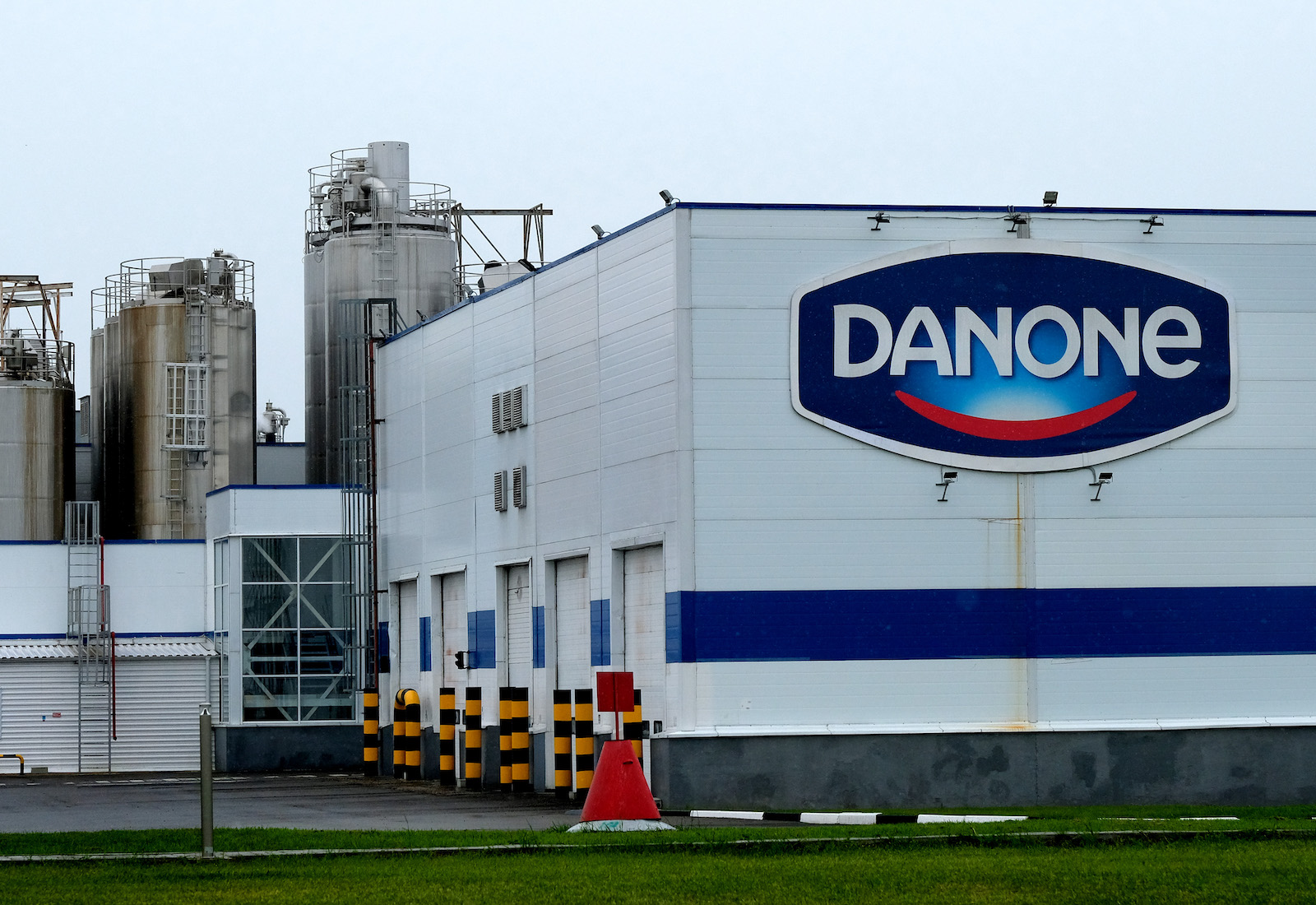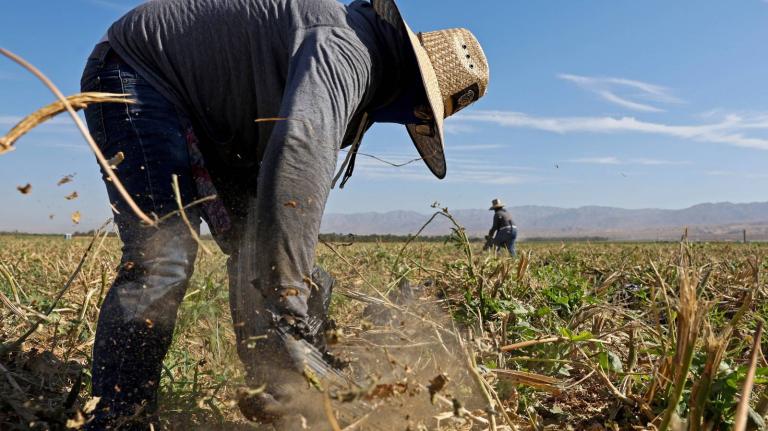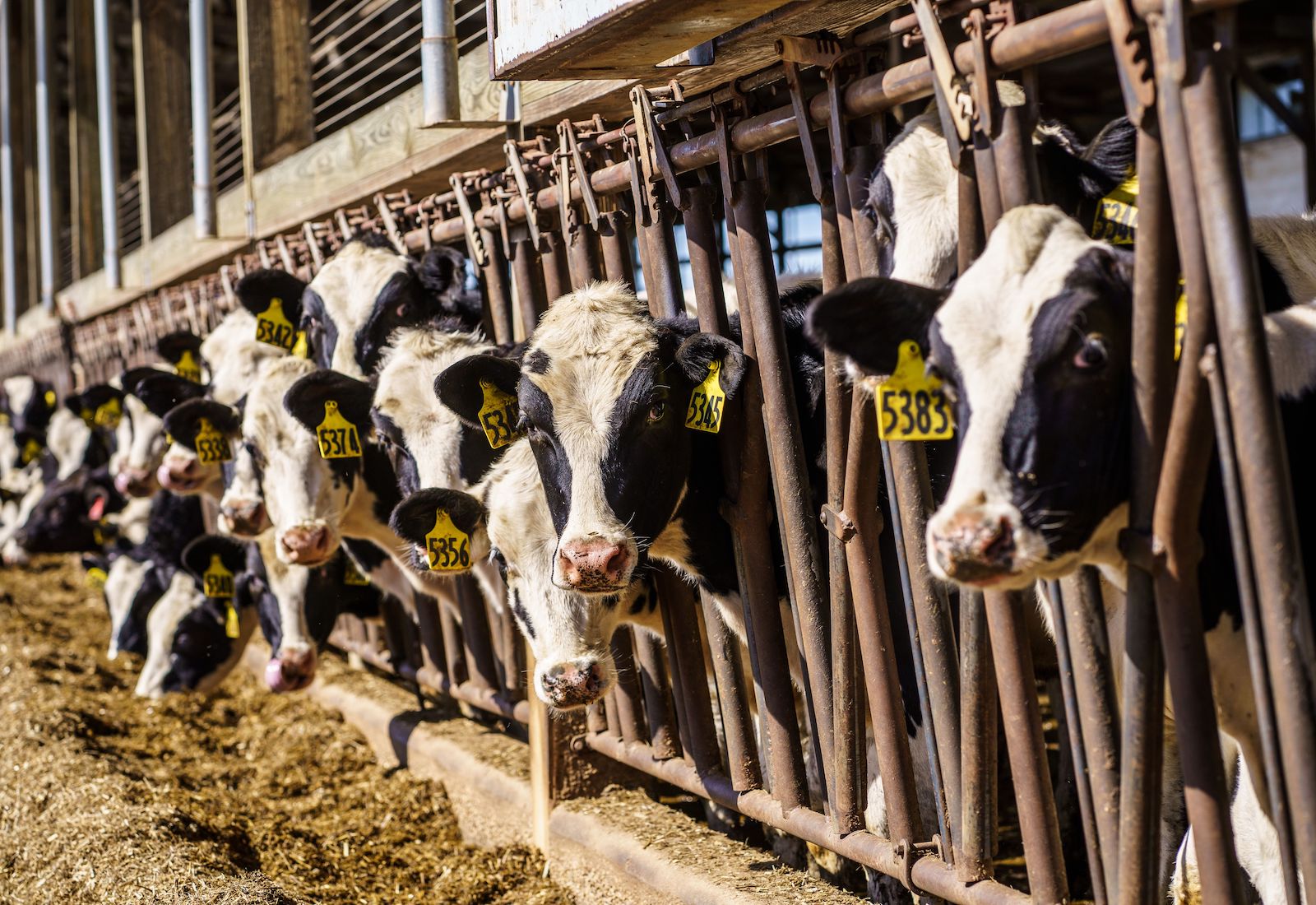Last month, the French food company Danone — owner of milk and yogurt brands like Activia and Horizon Organics — pledged to cut absolute methane emissions from its milk supply chains by 30 percent by 2030, making it the first major food company with a methane-specific emissions target.
Green groups have applauded the new pledge. Methane is a greenhouse gas some 80 times more potent than carbon dioxide over its first 20 years in the atmosphere, and food companies rarely report it separately from their CO2 emissions, even though agriculture is responsible for roughly a quarter of methane emissions worldwide.
But reducing those methane emissions is far from simple. A “methane ambition” document released by Danone outlines a few options, although somewhat vaguely and without acknowledging some of the controversies surrounding them. Some experts worry that Danone’s strategies could encourage dairy farmers in the company’s supply chain to lean on “unproven techno-fixes” — like special diets to reduce the methane in cow burps — which could distract from the need for more systemic solutions, like phasing down large-scale animal agriculture.
“When you start incentivizing and doing techno-fixes to a broken system, that’s not getting us where we need to be,” said Shefali Sharma, director of the nonprofit Institute for Agriculture and Trade Policy’s European office.
According to the United Nations’ Food and Agriculture Organization, or FAO, dairy production is responsible for about 1.4 billion metric tons of CO2-equivalent greenhouse gas emissions every year, about 3 percent of all human-induced climate pollution. Most of these emissions are methane, and half of them come from cow burps — cattle belch methane as part of a process called “enteric fermentation,” in which gut bacteria help them digest food. Another quarter comes from manure-related emissions of methane and nitrogen oxide, and the rest comes from feed production, fertilizers, and the use of land and energy.
Danone doesn’t run its own dairy farms — rather, the company buys its milk from some 50,000 independent farmers worldwide. That means its methane-reduction plan will hinge on suppliers’ cooperation. It’s not clear exactly how Danone plans to convince farmers to play along, though the company has already helped fund some emissions-reductions programs in places like France and has created advisory resources for farmers elsewhere. Danone’s methane ambition document says two of its three main strategies to cut methane involve manure treatment and “breakthrough methane inhibitors,” technologies to either stop cows from producing methane or to capture it at the point of release. (Yes, this means at the cows’ mouths. Danone is investing in a U.K. startup called ZELP, which produces a sort of muzzle for cows that can theoretically trap burps and convert their methane into water and carbon dioxide.)

There is evidence that these solutions can work. Some studies have shown that red seaweed and a molecule called 3-nitrooxypropanol can reduce enteric methane emissions while cattle are on feedlots by up to half when added to cow food. Andy Reisinger, principal scientist on climate change for New Zealand’s environment ministry, told Grist he’d have “high confidence” in their effectiveness if widely applied.
Manure management is also shown to reduce methane emissions. In California, a strategy called “anaerobic digestion” — in which factory farmers cover pits of liquid manure and convert the methane they release into biogas — has been deemed the state’s second most cost-effective climate program. Other effective management strategies involve simply covering pits of cow manure to limit methane leaking into the atmosphere or solid-liquid separation, in which solids are drawn out of slurried cow poop to be processed into fertilizer.
Reisinger said it’s “entirely realistic” that Danone could use these strategies — along with some simpler methods to reduce the methane-per-liter emissions of its milk supply, like selective breeding for highly productive cows — to get its suppliers to cut methane emissions by 30 percent in the next seven years. If they’re proven to be safe and effective, he said, there’s no reason not to use them, at least as part of a toolbox of several strategies.
However, some experts argue that these solutions — which show the greatest promise for industrial-scale dairy farms — are missing the forest for the trees, attempting to mitigate the harms of factory farming rather than phase it out. A report published last year by the Vermont Law and Graduate School, for example, found that manure-to-biogas solutions for factory farms — the only kinds of farms where these solutions make economic sense — obscure the extensive lifecycle emissions of the livestock industry and the environmental justice consequences of perpetuating concentrated animal feeding operations. These operations are often sited near low-income communities and communities of color, disproportionately exposing them to toxic pollutants like ammonia and volatile organic compounds.
“We need to really move toward systemic solutions in transitioning agriculture,” Sharma told Grist. Experts say this must include phasing down industrial-sized feedlots and reducing the global population of dairy cows. (Replacing cows on industrial farms with pasture-raised cattle wouldn’t help the climate, because pasture-raised cattle use more land and produce more emissions per liter of milk.) Lowering production would not only slash methane emissions but also limit animal cruelty and pollution of soil and water. Workers on industrial animal farms around the world have also spoken of the “hell” the system exposes them to — from brutal working conditions to exploitative contracts with agricultural behemoths. In the U.S., 70 percent of dairy cows live on factory farms, and 85 percent of the planet’s milk comes from non-pasture-raised sources.

Environmental advocates argue that food companies could play a role in the transition away from factory farming by replacing some of their dairy milk production with an increase in plant-based alternatives. Milks made from soy, rice, and oats use dramatically less land and water to produce and create just a fraction of the greenhouse gas emissions. Governments could help too, Sharma said, by creating incentives for farmers to move away from large-scale animal agriculture.
In response to Grist’s questions about its methane reduction plan, Danone gestured broadly at an intention to reform dairy production. A spokesperson said the company intends to achieve its methane target by adopting “regenerative” practices, defined very broadly to include “improvement of herd management, feed fundamentals, and manure management,” as well as “reintegrating animals into the landscape.” Danone says it has already helped to incorporate these practices on some small farms. And though Danone’s recent methane ambition document names “breakthrough methane inhibitors” as one of three strategies to reduce methane, the spokesperson said that feed additives are intended to be “a complementary solution to go the last mile in most efficient farms.”
The spokesperson did not respond to questions about whether the company advocates for a decline in the global cattle population or a shift away from industrial-scale dairy farms. According to a report Danone published in 2021, 70 percent of its milk volume comes from farmers with 10 or more cows.
To be sure, reshaping entire food systems is a tall order for one company, and Reisinger defended Danone for moving in a positive direction. He said the company was filling a policy gap left by the majority of countries that have yet to set a binding methane reduction target for agriculture. Danone’s new pledge, he explained, is “providing an incentive that so far governments have failed to provide” for milk producers to measure, report, and mitigate methane emissions. Reisinger and Sharma agreed that this role should eventually be taken up by national regulators and intergovernmental bodies, like the FAO.




